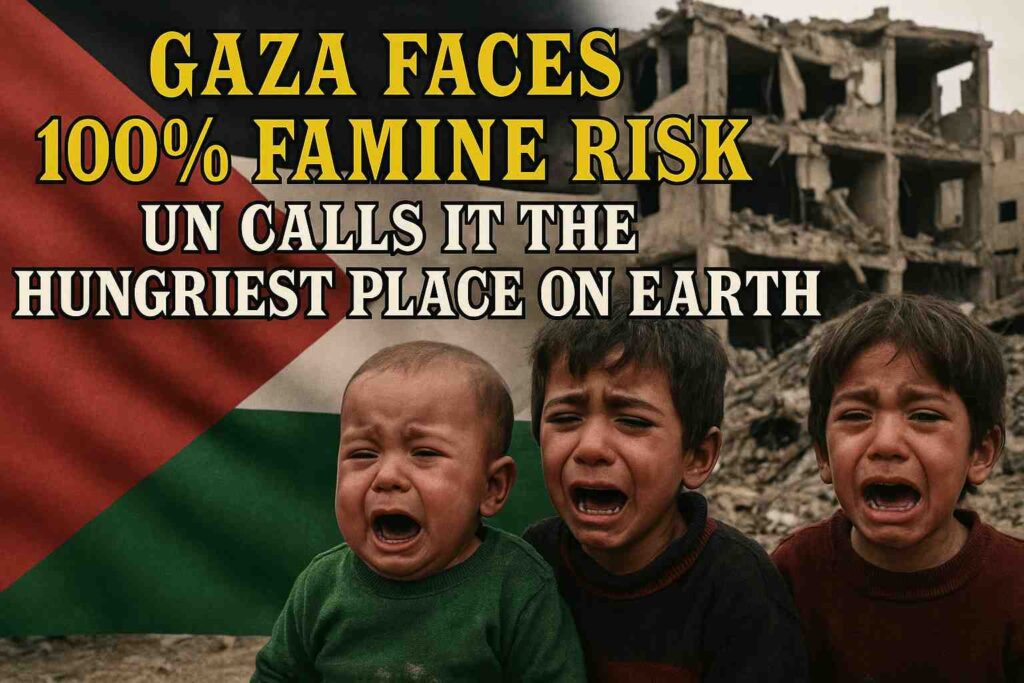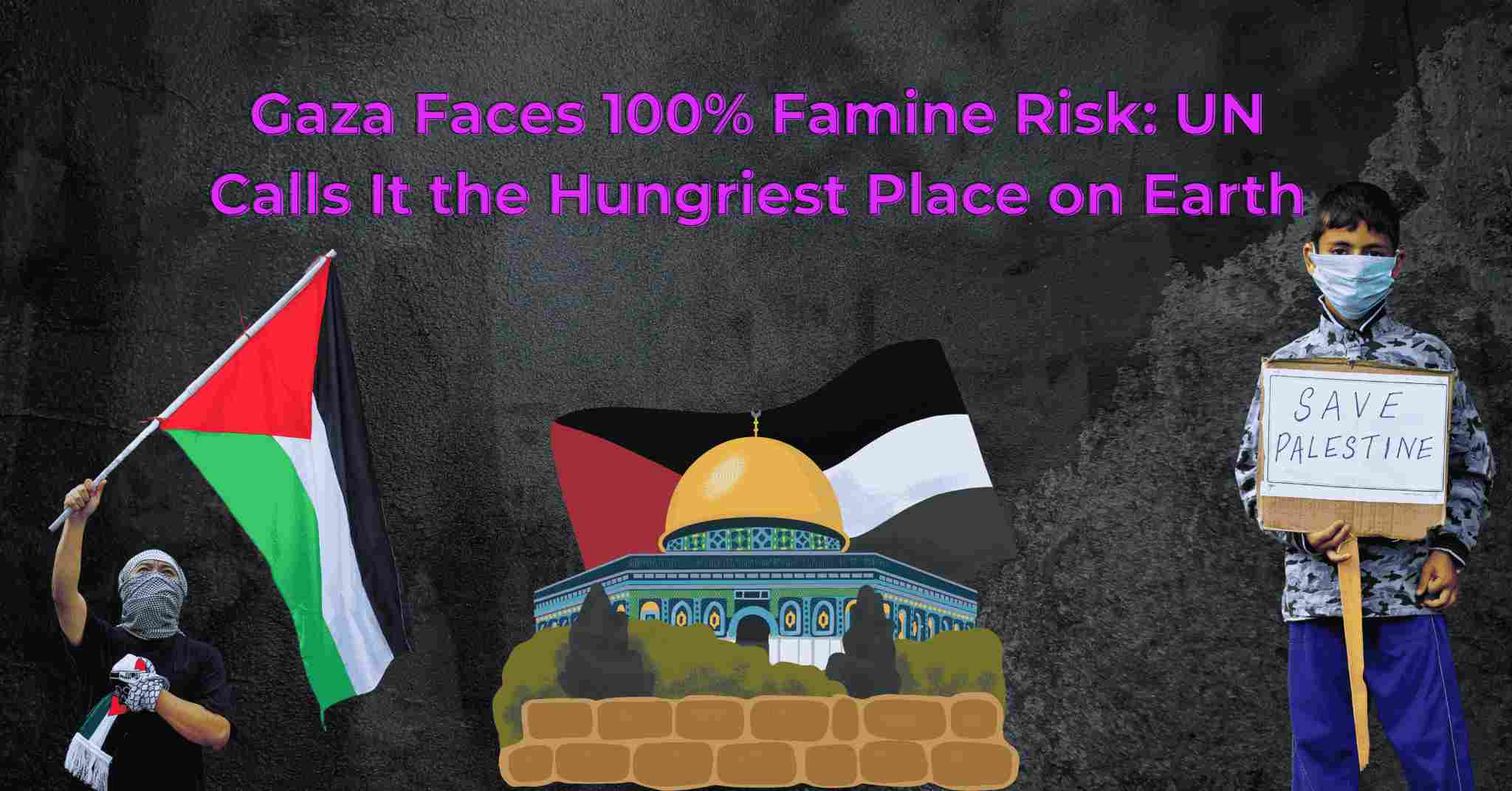In a critically disturbing report, the United Nations has labeled Gaza as the “most hunger-stricken place on the planet”, with 100% of its inhabitants now under the threat of famine. This sobering categorization sees Gaza as the only place in the globe with every single one of its residents under the threat of hunger. The Gaza humanitarian crisis 2025 has been pushed into a critical phase, with the experts branding it as one of the worst such modern humanitarian catastrophes.
Let’s investigate what caused this crisis, what the most recent UN report indicates, and what the global community can do in order to avert a disaster.
Gaza Humanitarian Crisis 2025: An Unfolding Disaster
By the UN-backed Integrated Food Security Phase Classification (IPC), all inhabitants of Gaza are now in IPC Phase 3 or higher — i.e., experiencing crisis-level hunger or worse. An unprecedented number are in Phase 5: Catastrophe, the top phase short of a formal famine designation.
At the core of the Gaza humanitarian crisis 2025, food insecurity has gotten out of hand. Child malnutrition in the north of Gaza stands at over 30%, and clean water and medicine are almost unavailable.
Why Is Gaza Under Such Severe Famine Threat?
The 2025 Gaza humanitarian crisis is fueled by a lethal cocktail of long-term conflict, complete blockade, and deteriorating humanitarian infrastructure.
- Ongoing Conflict
Following the October 2023 Israel-Hamas flare-up, the infrastructure in Gaza has been ruined, with hospitals, roads, and food networks affected. - Blockade and Border Closures
Gaza has been under a tight blockade for over 16 years. With most crossings closed or severely limited, aid deliveries are minimal. - Humanitarian Operations Halted
Humanitarian organizations such as UNRWA and WFP cannot adequately deliver aid because there are continuous airstrikes and a scarcity of fuel.
Children and Women Suffer the Most
Over half of Gaza’s population are children under the age of 18. These children are not just going hungry—they are starving, with no access to basic nutrition or clean water. Pregnant women are being forced to give birth without even the most essential healthcare services. Amidst the Gaza humanitarian crisis 2025, an entire generation is being lost—not just to famine, but to fear, trauma, and neglect. Without immediate intervention, the damage to Gaza’s future may be irreversible.

International Reactions and Calls for Emergency
The UN and global humanitarian agencies are appealing for:
- Immediate ceasefire
- Full Humanitarian Access
- Increased aid funding
“Gaza stands on the brink of a complete famine,” warned UN Secretary-General Antonio Guterres. “We must act now—before it’s too late.”
Despite global outrage and repeated calls for action, the situation on the ground remains largely unchanged.
What Must Be Done Now?
To manage the Gaza humanitarian crisis 2025, the following steps need to be taken urgently:
- Open All Crossings: Permit full-scale humanitarian access
- Permanent Ceasefire: Allow aid workers to function without fear
- Funding Spurt: Donor countries need to act now
- Political Solution: Permanent peace can be the only long-term solution
What Can You Do?
You can assist by:
- Donating to reputable non-governmental organizations such as UNICEF, Red Crescent, and WFP
- Raising awareness online
- Signing petitions calling for active intervention
Conclusion
The Gaza humanitarian crisis 2025 isn’t just a headline—it’s a real-time tragedy where millions face the threat of starvation every single day. With food, water, and medical supplies nearly gone, the situation worsens by the hour. This is no longer a warning; it’s happening now. The world must act—not with words, but with urgent aid, compassion, and commitment. The people of Gaza can’t afford to wait. The Gaza humanitarian crisis 2025 demands action now.



